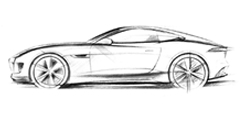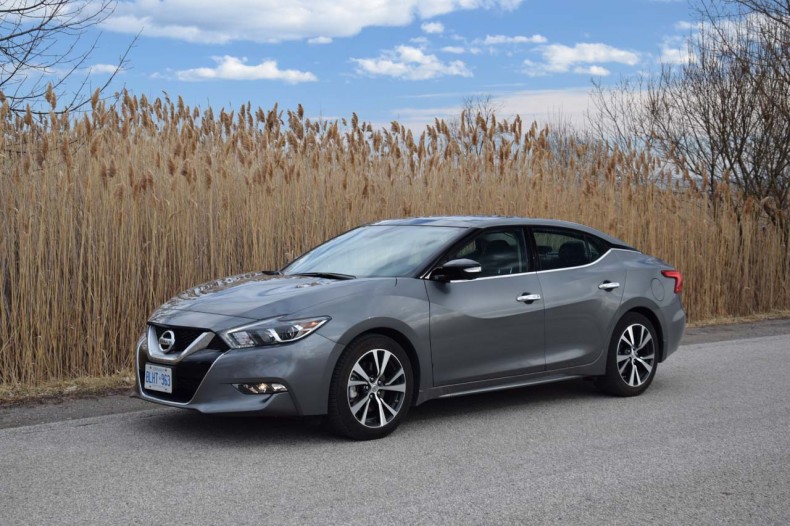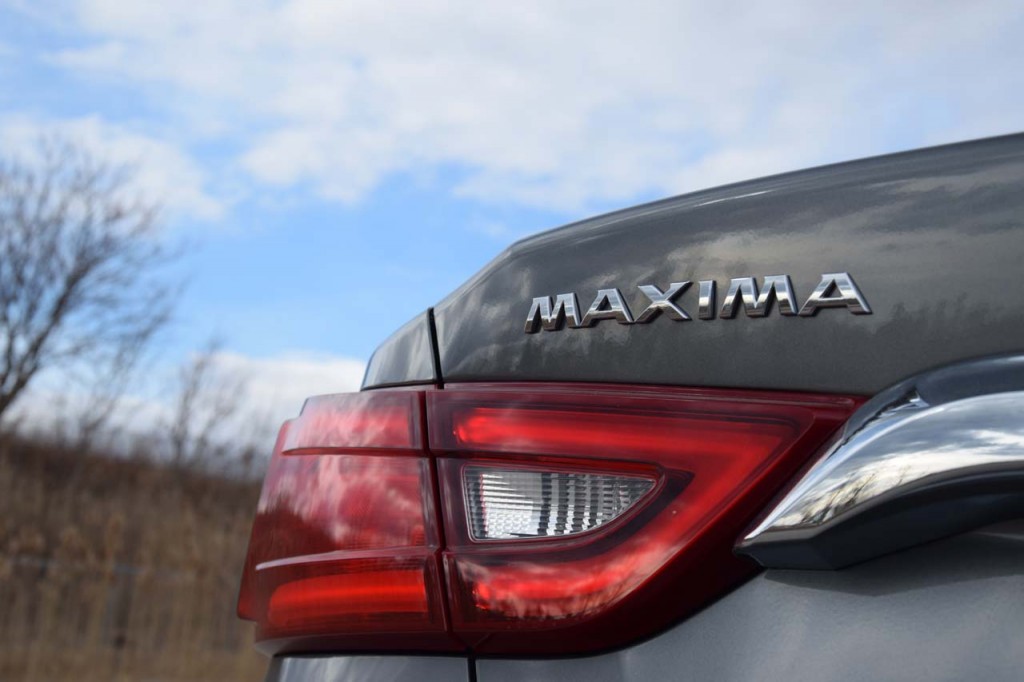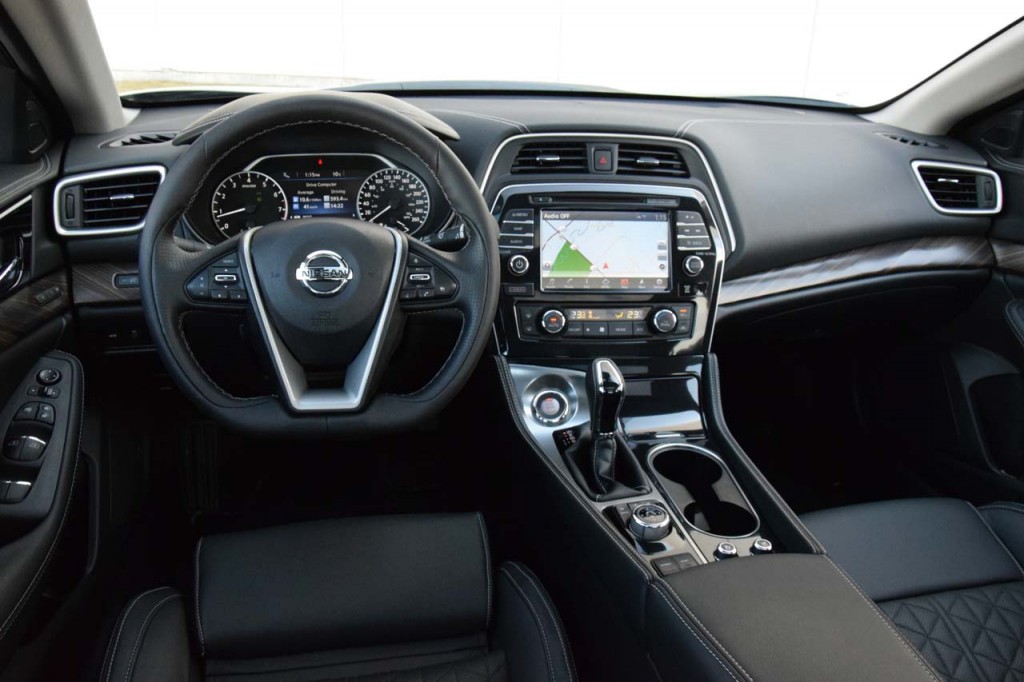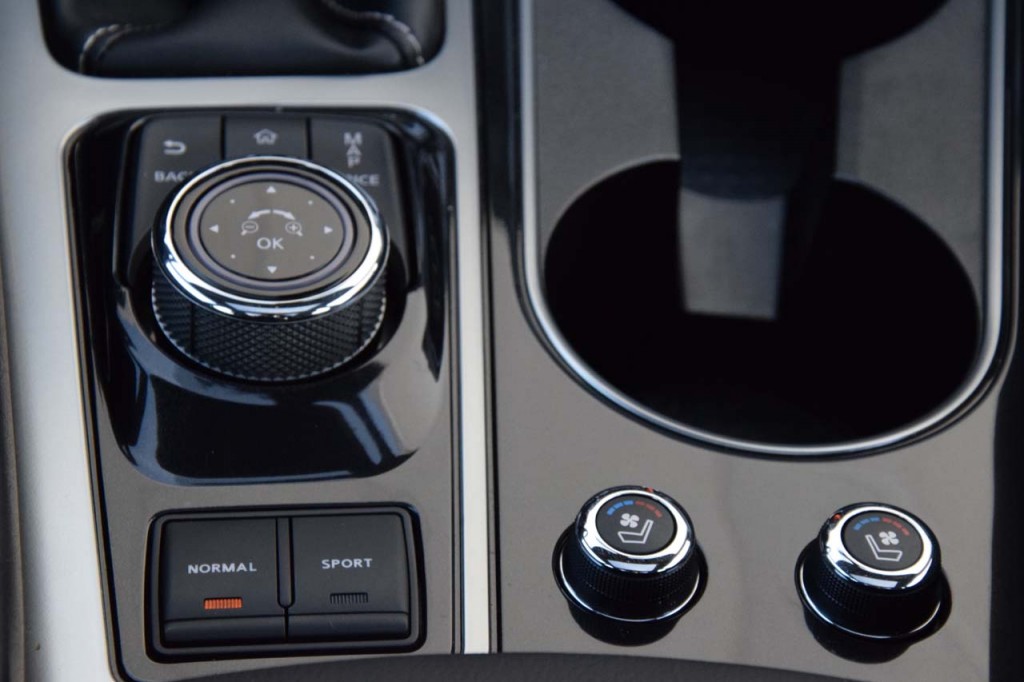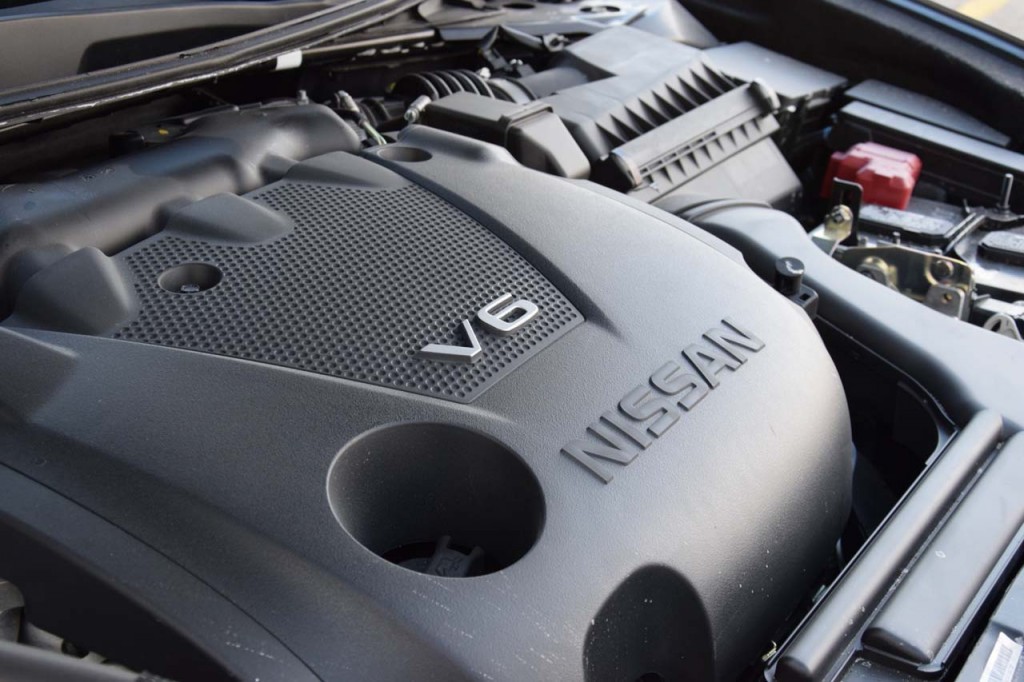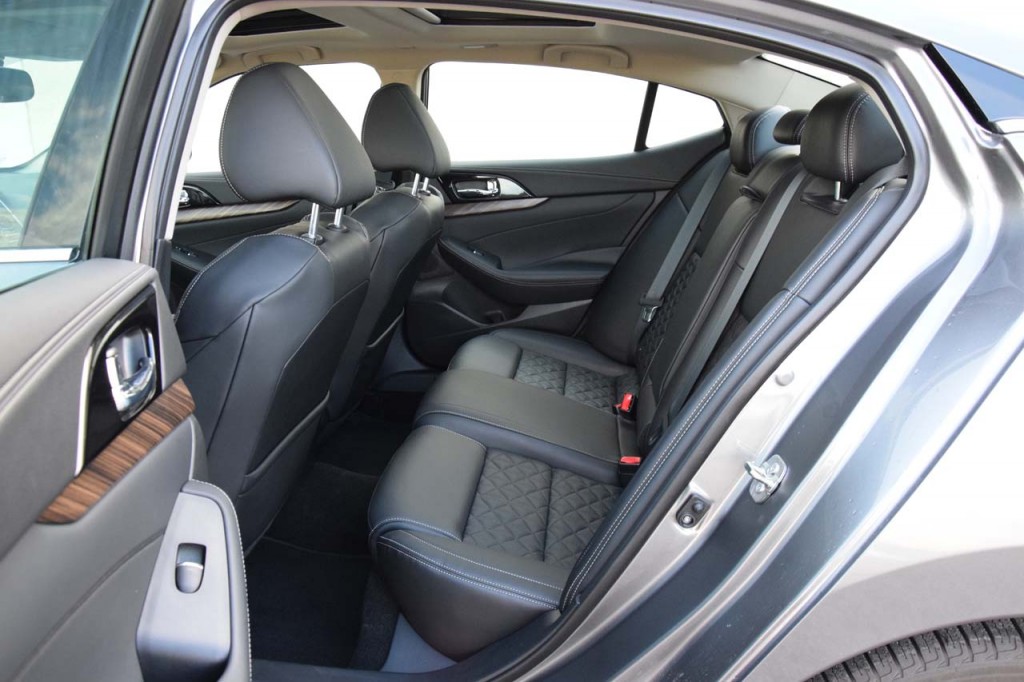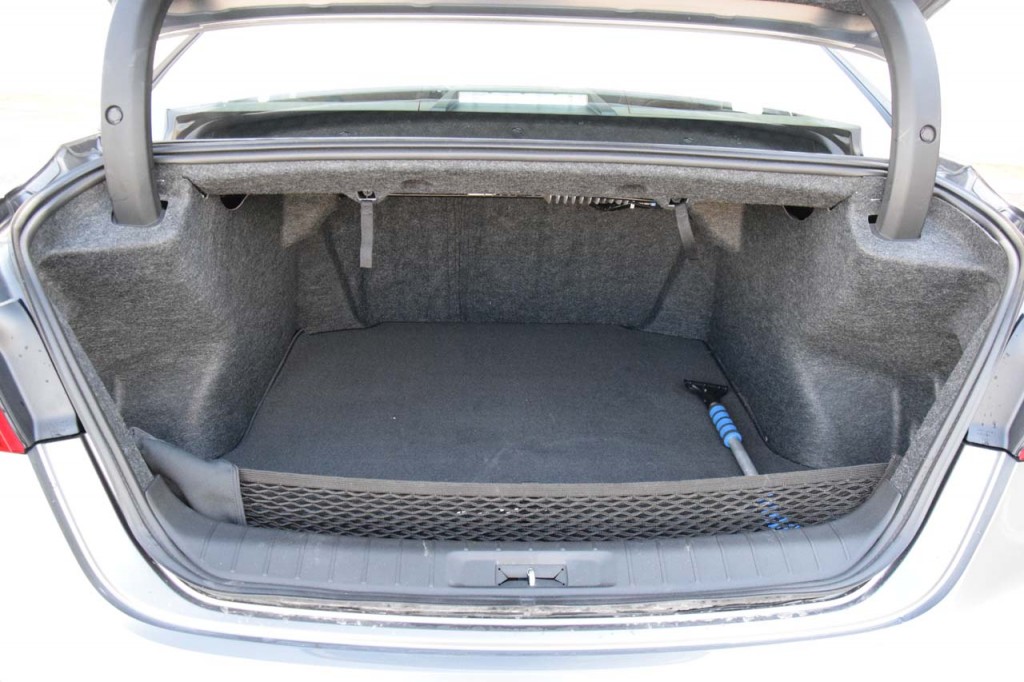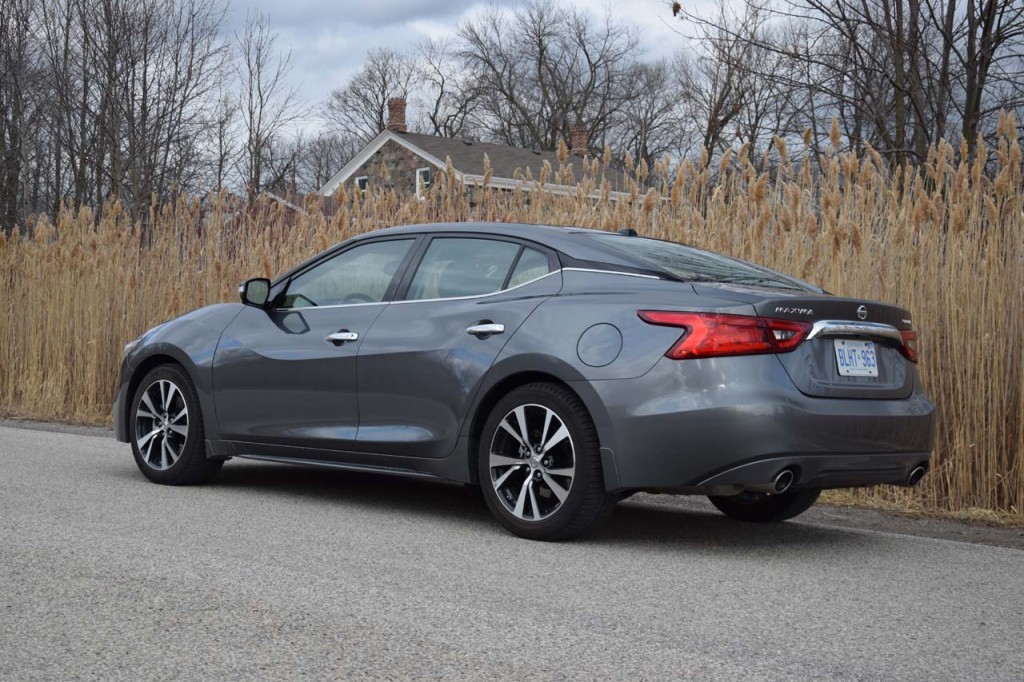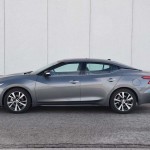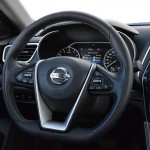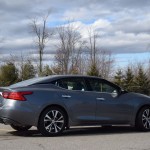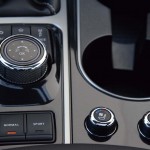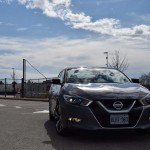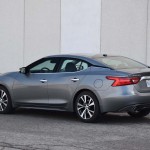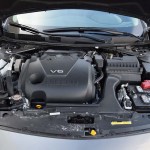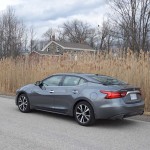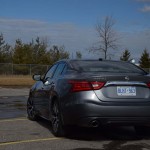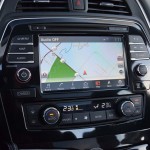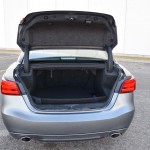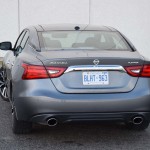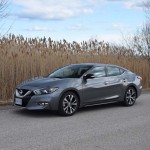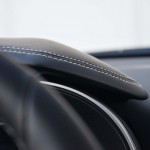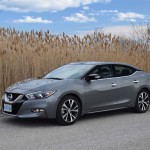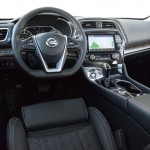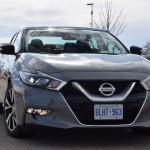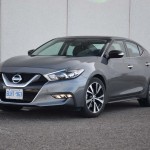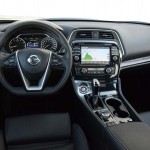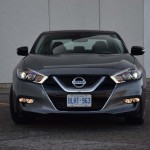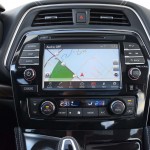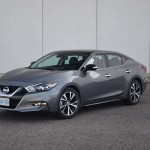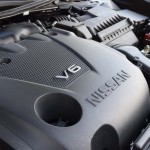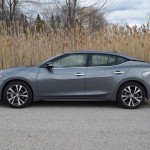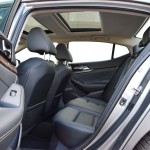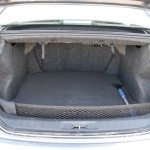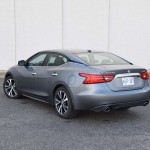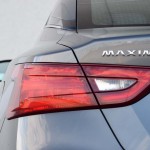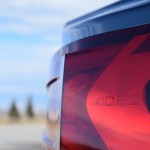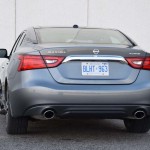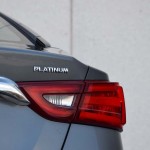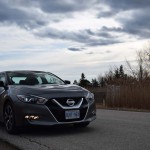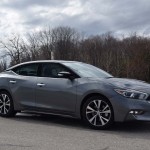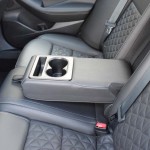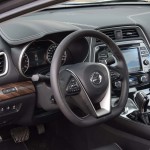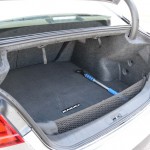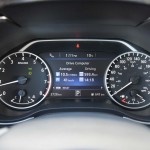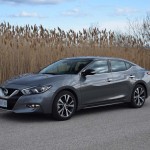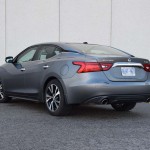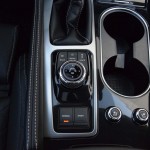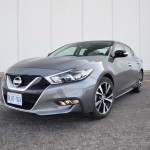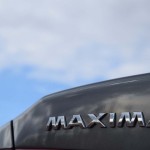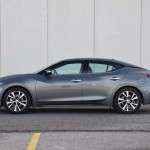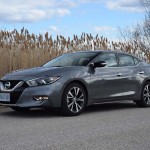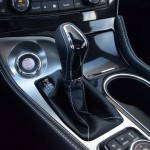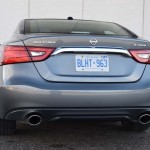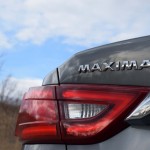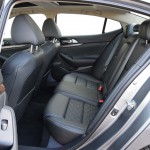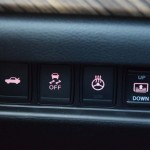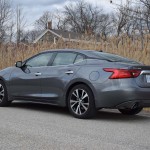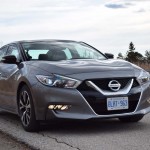3.5L V6 VQ-Series
300 hp
261 lb-ft
CVT
7.1
48
10.9/7.8
1,630
4,897
405
5
$43,300
Nissan has always tried to market the Maxima as the alternative large sedan, the one you’d buy because there is more to life than ample rear legroom. As a matter of fact, in the latest reincarnation of their flagship sedan, they have pushed the envelope even further by referring to it as the “4 Door Sports Car”. They have also made some bold statements like “we eliminated the sunroof from the SR model to increase rigidity”. So with one eye-brow up, let’s start digging a bit deeper.
First of all, the exterior design looks very nice; the sporty front grille with the non-canonical shaped headlights compose a very aggressive front end that has pretty much set the benchmark for the rest of the firm’s range. The sides are deeply sculpted leading to the most interesting looking C-Pillars on the market. That disconnecting design gives a very futuristic look to a rear end that wouldn’t really stand out without it. Sitting on those nice looking 18-inch wheels, the low belt-line and wide stance are the first indications that Nissan’s bold statements might have more than just words behind them.
Inside the cabin, the quality of the materials used is impressive. Real stitching is found on the dash and door panels, complementing the very upmarket look of the leather seats. Ergonomically sound and slightly offset towards the driver, the centre of the dash is home to most devices and controls. All buttons have a quality feel and have been placed in a logical order making it easy to find what you are looking for. The only complaint here, would be the round switch for the seat temperature control, as the setting indicator is hard to see and usually covered by your finger. The flat bottom steering wheel is impressive and the back-illuminated controls on it have been positioned in an exemplary way. There are two colour displays onboard; an 8-inch touch sensitive unit located at the centre of the dash, and a 7-inch inside the instrument cluster. Both screens are hi-res and nice to look at, something that doesn’t apply for graphics in the navigation’s map view.
The interior is not only well made, but it is also very roomy. Five adults will sit with good levels of comfort, but keep the number down to four and it is ultimate comfort for all. There is ample shoulder room, legroom and headroom in all four corner seats, and the nice panorama roof helps make the cabin feel airy. The trunk, at 405L could’ve been a bit bigger, or at least have less intrusive wheel-wells, is it gets quite narrow after the first foot of depth.
Nissan claims that the new VQ-Series 3.5L V6 engine under the hood, is 60% new parts compared to the older model. It now outputs 300HP and 261lb-ft and on top of that, it sounds really nice. It carries over the hauling sound from the Z-series, and that makes the drive quite exciting. Even the CVT is unable to ruin the sound track; you can flip it to sequential mode and then shift between 7-preset rations within the blink of an eye. Performance is really good, despite the constant struggle of the front tires to route power to the ground. Our tests clocked the winter tire equipped car at 7.1 seconds till the 100km/h mark, while applying the brakes at full effect will bring the car back to a complete stop in 48m. On the go, acceleration is very good and the drivetrain will never leave you asking for more power. The CVT gearbox is good enough to go unnoticed in regular driving, but if you get caught up in slow moving traffic, you will find the way it couples a bit aggressive. It does help with the fuel efficiency of the vehicle, as our average was just 10.5lt/100km combined, a good number for the size and power.
Nissan also claims that they have improved the torsional rigidity of the chassis by 25%; I wonder if they did an admirable job or was it just the old one being really bad. In any case, together with the independent front and rear suspension setups, the car handles really well showcasing little body roll in tight corners. The steering feel is good and turn-in is sharp. For its class, it grips rather well and tries to resist understeer as hard as it can. It is very neutral through corners and at times very forgiving. It might not exactly be a sports car, but it is definitely happy when thrown in to corners at above average speed.
Ride comfort, while not spectacular, is a good compromise between soft enough but still able to retain dynamic characteristics for handling. Most road defects are handled well, producing little to no soundtracks, and it is only the “Goliath” of potholes that really upset the suspension and the occupants. The most impressive element in terms of comfort would be refinement. On smooth tarmac and with the engine allowed to rev low, it almost feels like an EV since there are virtually no vibrations felt and the engine note is usually covered by the good Bose sound system.
It is hard to round up a conclusion for a vehicle that has very limited direct competition. The Chevy Impala, Ford Taurus and Toyota Avalon are the closest competitors, but all are really different. It seems like Nissan has a good product in a good place and for the price it makes a very compelling offering. Seeing an AWD option would’ve been really appealing to us Canadians, but surely not to Infiniti.
Design
Interior
Refinement
Performance
Fuel Economy
Technology
Safety
Initial Traction
CVT Makes it less sporty
Trunk size and shape
A very good and likeable car. Great interior.


